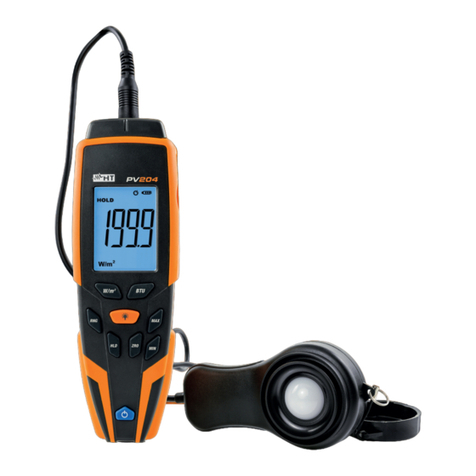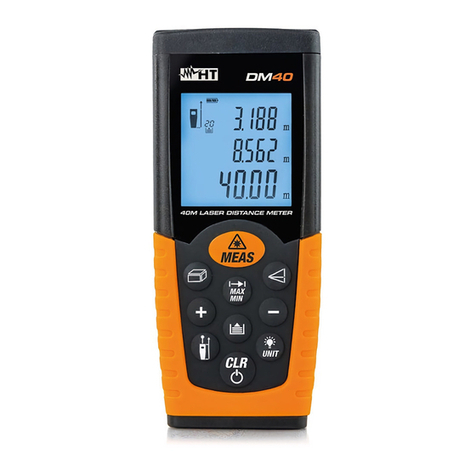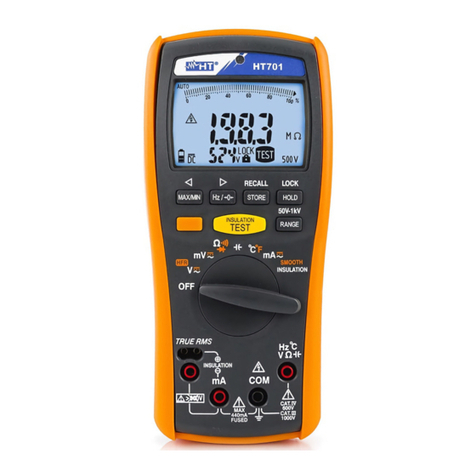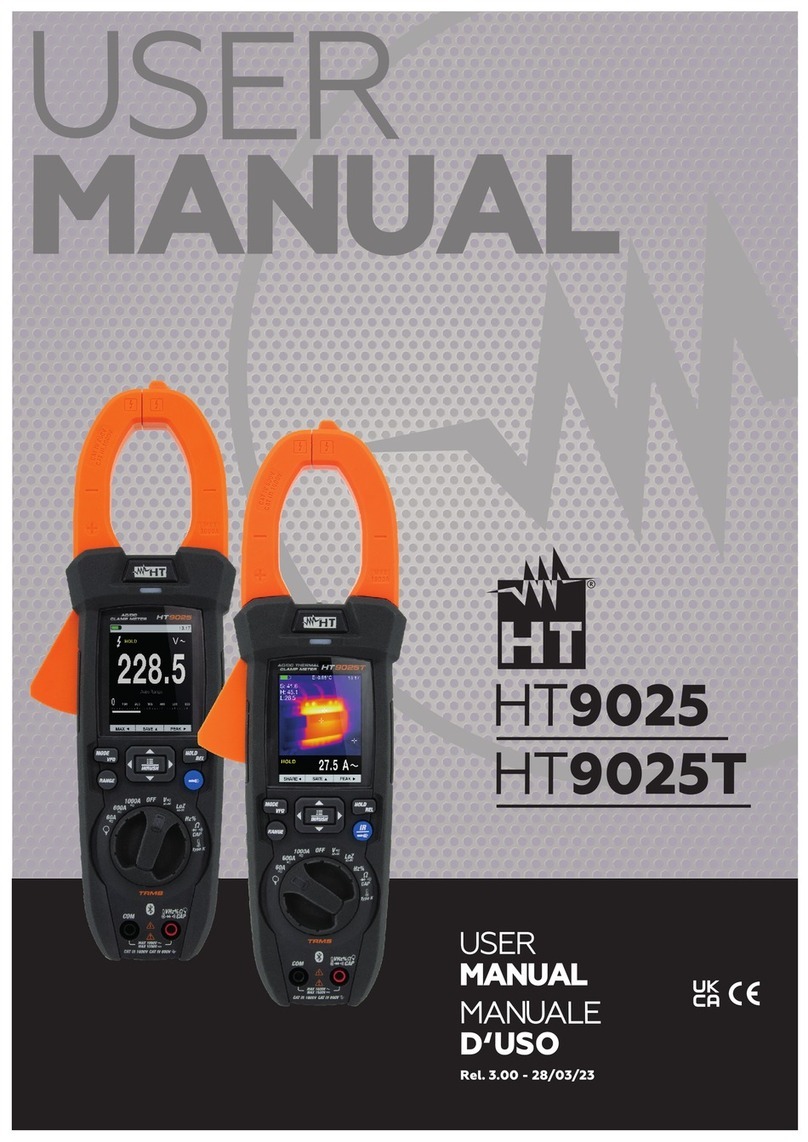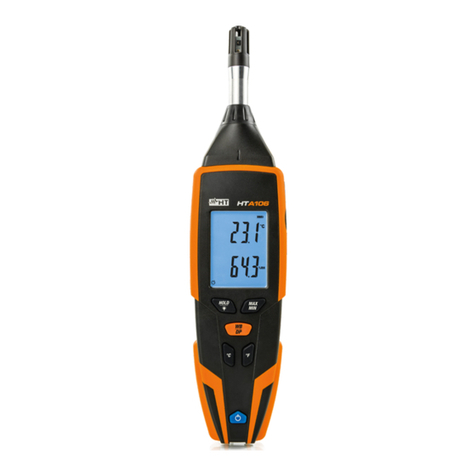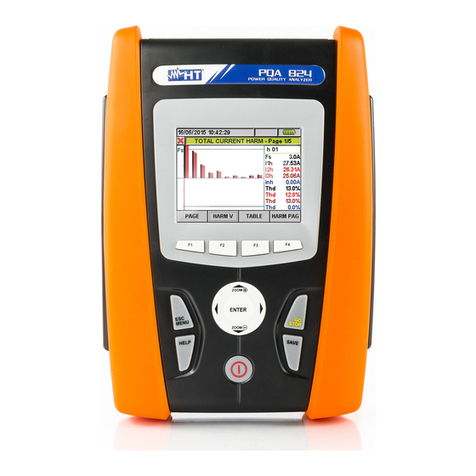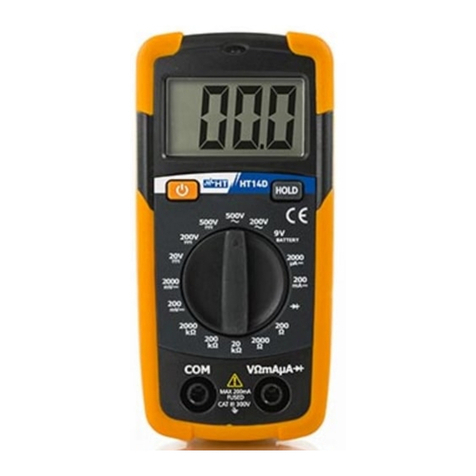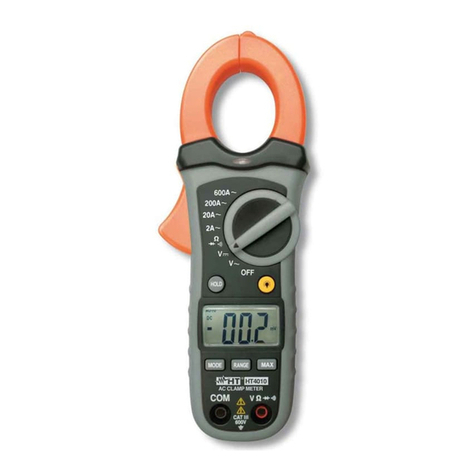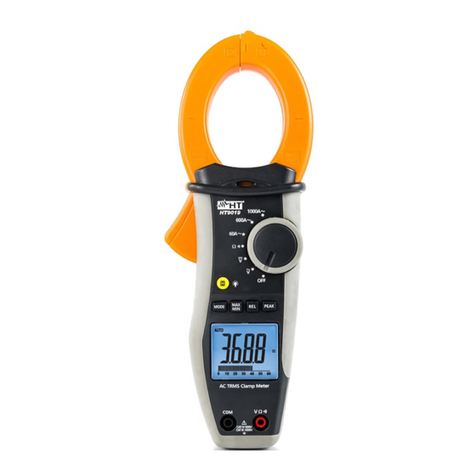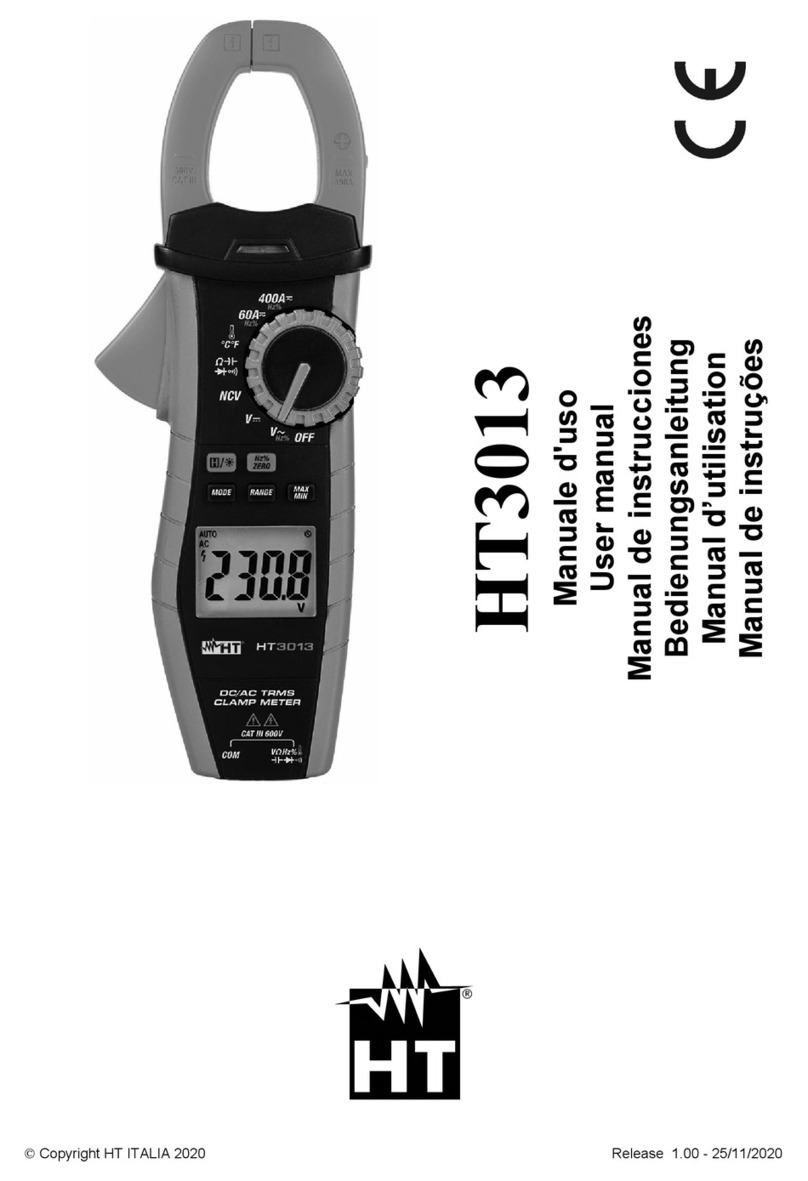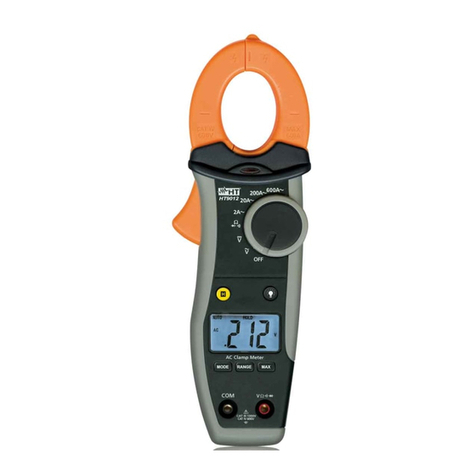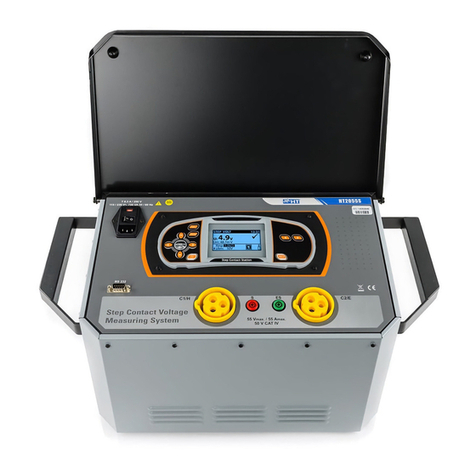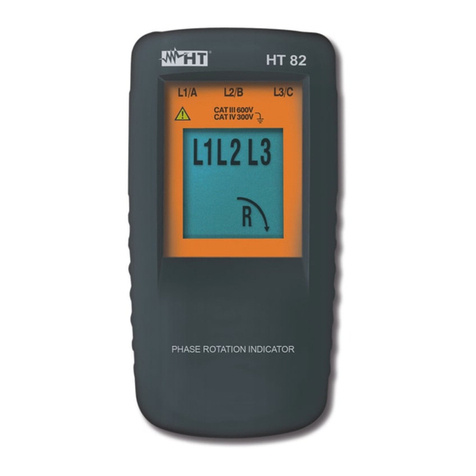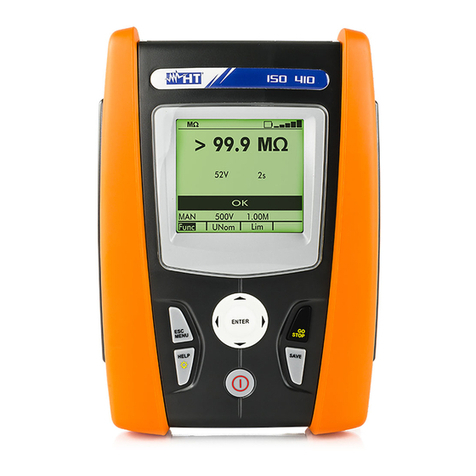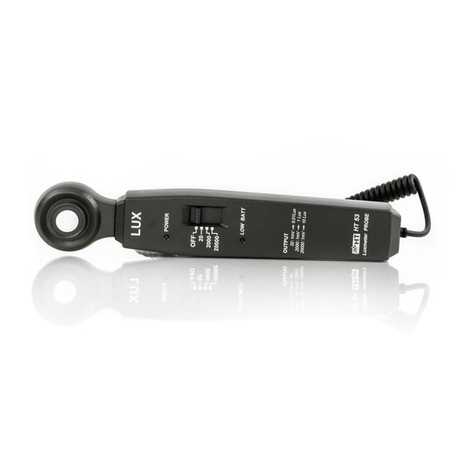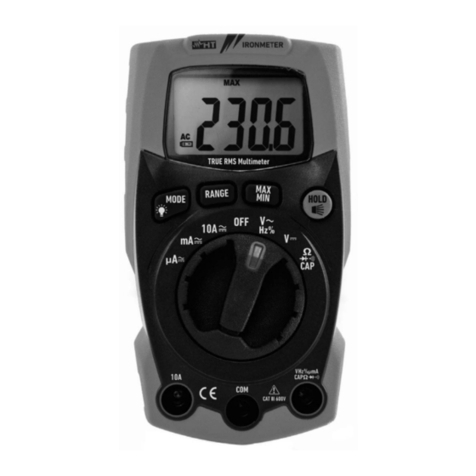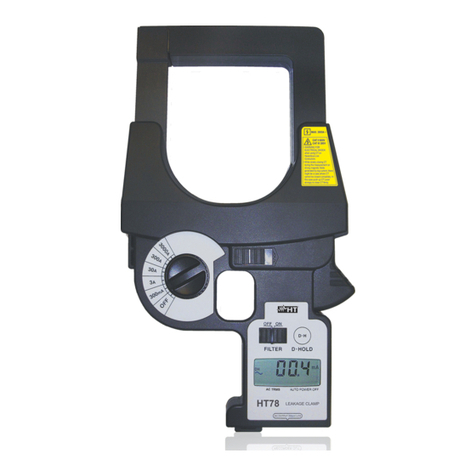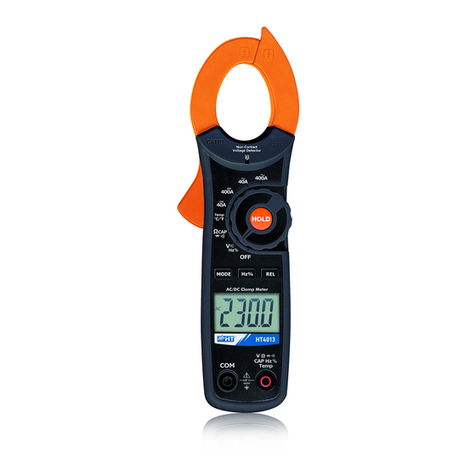
400 Series
EN - 2
6.8.2.Description of anomalous results........................................................................................... 54
6.9.LEAK: real time measurement of the leakage current through an external clamp .......... 55
6.9.1.Description of anomalous results........................................................................................... 56
7.MAINS ANALYSIS......................................................................................................57
7.1.PWR: real time measurement of the mains parameters ................................................. 57
7.1.1.PAR mode.............................................................................................................................. 58
7.1.2.HRM V ane HRM I mode ....................................................................................................... 58
8.MEMORY ...................................................................................................................59
8.1.How to save a measure................................................................................................... 59
8.1.1.Description of anomalous results........................................................................................... 59
8.2.Saved data management ................................................................................................ 60
8.2.1.How to recall a measure ........................................................................................................ 60
8.2.2.How to delete the last measure or all of them ....................................................................... 61
8.2.3.Description of anomalous results........................................................................................... 61
9.CONNECTING THE INSTRUMENT TO THE PC .......................................................62
10.MAINTENANCE..........................................................................................................63
10.1.General............................................................................................................................ 63
10.2.Battery replacement ........................................................................................................ 63
10.3.Instrument cleaning ......................................................................................................... 63
10.4.End of life ........................................................................................................................ 63
11.SPECIFICATIONS......................................................................................................64
11.1.Technical feratures.......................................................................................................... 64
11.2.Reference guidelines....................................................................................................... 68
11.2.1.General .................................................................................................................................. 68
11.2.2.Reference standards for verification measurements............................................................. 68
11.3.General characteristics.................................................................................................... 68
11.4.ENVIRONMENT.............................................................................................................. 68
11.4.1.Environmental working conditions ......................................................................................... 68
11.5.Accessories..................................................................................................................... 68
12.SERVICE....................................................................................................................69
12.1.Warranty conditions......................................................................................................... 69
12.2.Service ............................................................................................................................ 69
13.PRACTICAL REPORTS FOR ELECTRICAL TESTS .................................................70
13.1.Continuity measurement on protective conductors ......................................................... 70
13.1.1.Purpose of the test................................................................................................................. 70
13.1.2.Installation parts to be checked ............................................................................................. 70
13.1.3.Allowable values .................................................................................................................... 70
13.2.Insulation resistance measurement................................................................................. 71
13.2.1.Purpose of the test................................................................................................................. 71
13.3.Check of the circuit separation........................................................................................ 74
13.3.1.Definitions .............................................................................................................................. 74
13.3.2.Purpose of the test................................................................................................................. 74
13.3.3.Installation parts to be checked ............................................................................................. 74
13.3.4.Allowable values .................................................................................................................... 74
13.4.Working test of RCDS ..................................................................................................... 76
13.4.1.Purpose of the test................................................................................................................. 76
13.4.2.Installation parts to be checked ............................................................................................. 76
13.4.3.Allowable values .................................................................................................................... 76
13.4.4.Note........................................................................................................................................ 76
13.5.Test of RCD tripping current............................................................................................ 77
13.5.1.Purpose of the test................................................................................................................. 77
13.5.2.Installation parts to be checked ............................................................................................. 77
13.5.3.Allowable values .................................................................................................................... 77
13.5.4.Note........................................................................................................................................ 77
13.6.Measurement of short-circuit impedance ........................................................................ 78
13.6.1.Purpose of the test................................................................................................................. 78
13.6.2.Installation parts to be checked ............................................................................................. 78
13.6.3.Allowable values .................................................................................................................... 78












